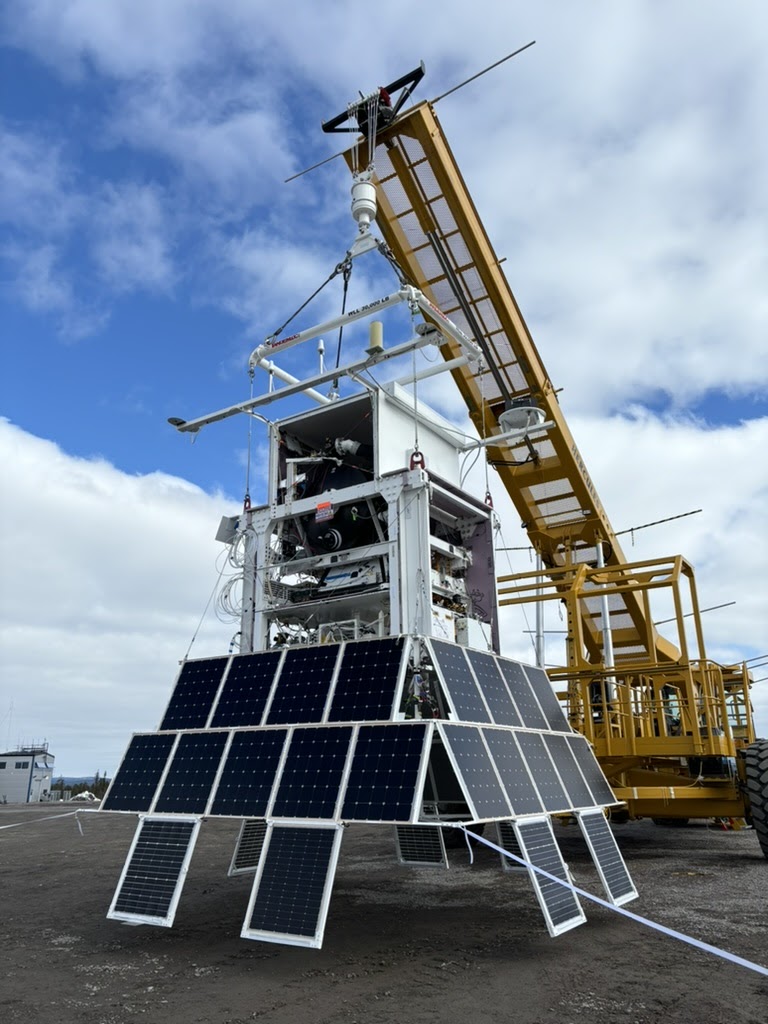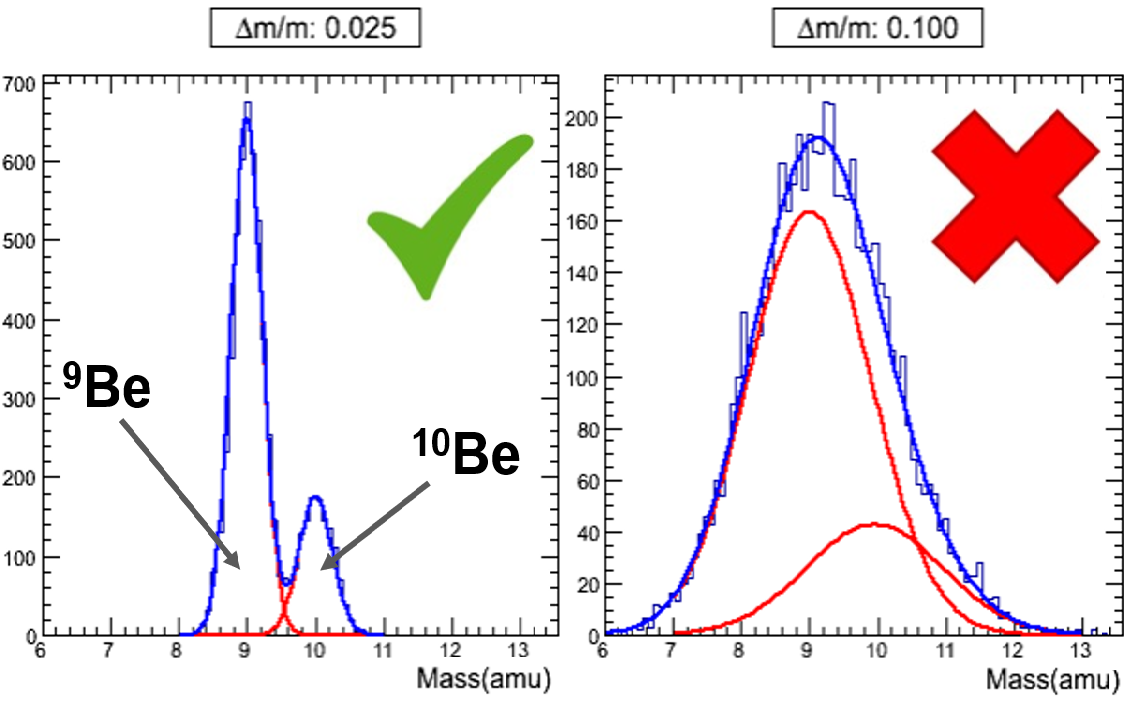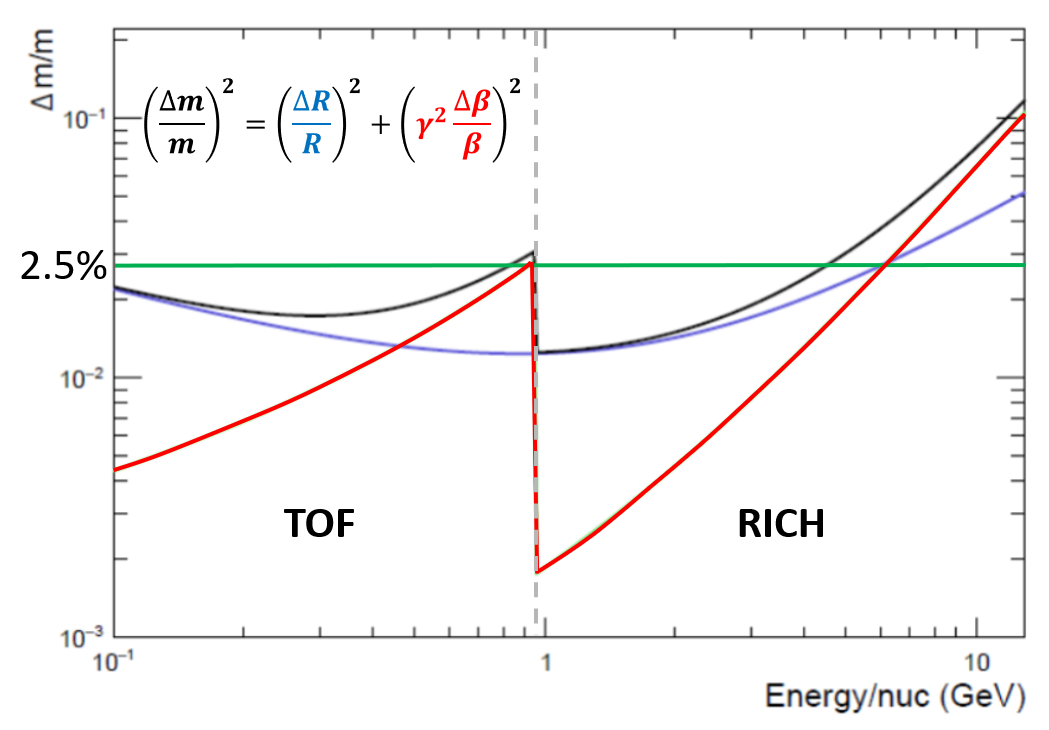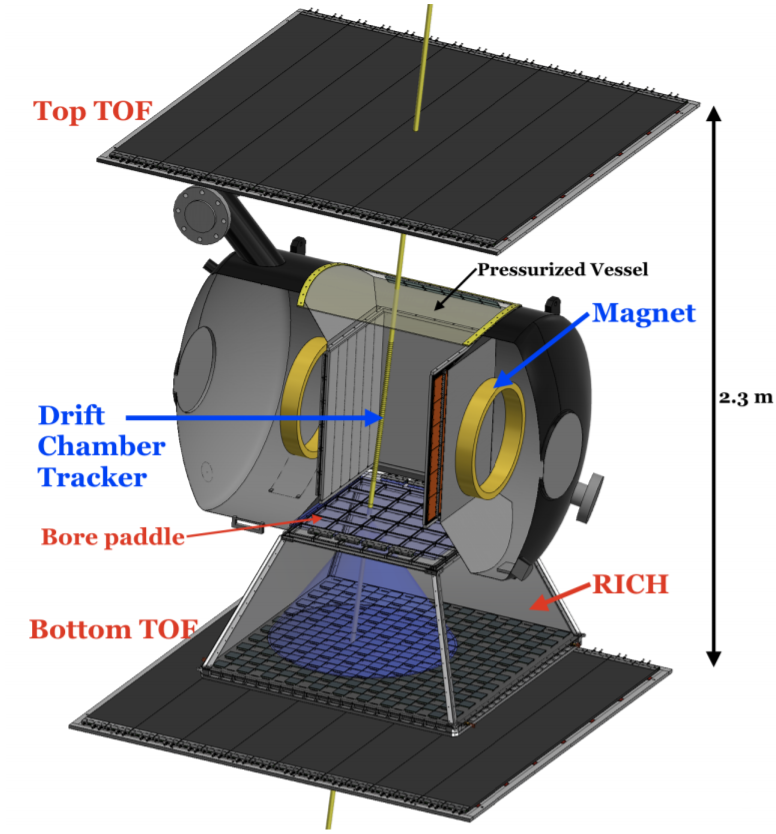The Instrument

The HELIX detector is a mass spectrometer, built around a 1 Tesla superconducting magnet and a high-resolution tracking system to determine particle rigidity (R). Up to 1 GeV/n the Time-of-flight (ToF) will measure velocities (Β) and above 1 GeV/n the ring-imaging Cherenkov detector (RICH) will take over. The ToF will also be able to measure the charge (Z). From these measurements, we can infer the mass of the incoming nuclei using the following formula
$$m=Ze\color{blue}R\frac{\sqrt{1-\color{red}\beta^2}}{\color{red}\beta}$$
Peak separation
To clearly separate neighboring isotopes, one desires a mass resolution of at least ∼0.25 mass units, corresponding to a ∆m/m ∼ 2.5% for 10Be and 9Be. This is illustrated in the above figure, which shows simulated mass histograms for 10Be and 9Be with 2.5% and 10% mass resolutions, respectively. Clearly, the poorer resolution does not permit a successful measurement.

Sensitivity
The above plot shows the expected relative mass resolution vs energy per nucleon for the HELIX instrument with 10Be incident particles. The blue line is the contribution to the mass resolution from the spectrometer; the green line is the γ2-weighted contribution from the velocity-determining instrument: the TOF below 1 GeV/n and the RICH above 1 GeV/n. The black line is the quadrature sum of the two.
